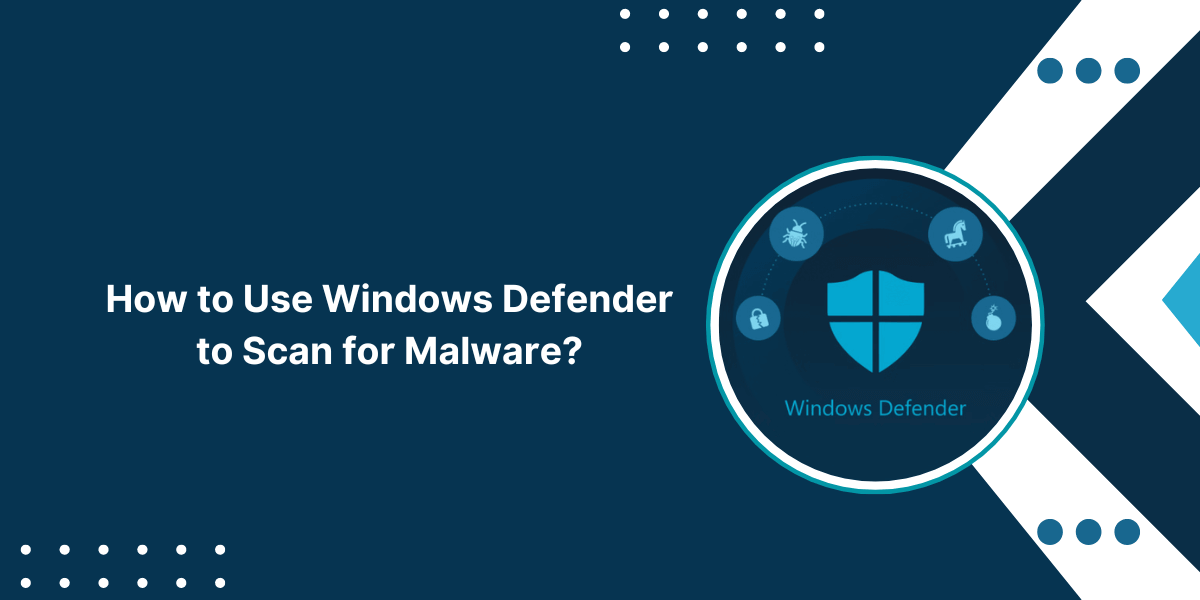A Step-by-Step Guide for Performing a Windows Defender Scan for Malware
Use Windows Defender to scan for malware, as it is the built-in anti-malware software that comes with Windows operating systems. It protects against spyware, viruses, and other malicious software (malware) that may infect your computer. Regularly scanning for malware with Windows Defender is important to help keep your system protected.
Key Takeaways
- Windows Defender is a free anti-malware program that is included with Windows. It helps protect against viruses, spyware, and other threats.
- Running regular quick or full scans with Windows Defender is recommended to detect malware that may be present on your system.
- You can manually start a Windows Defender scan or set up scheduled scans to run automatically on a regular basis.
- Windows Defender offers full, quick, and custom scan options to target specific files, folders, or drives.
- Scan results will identify any malware found and allow you to take action to remove the threats and clean up the infection.
- Windows Defender scan options and settings can be accessed through the Windows Security app in Windows 10 and 11.
- Keeping Windows Defender up to date ensures maximum detection of the latest malware threats. Using it, along with safe browsing and downloading practices, provides layered security.
How to Manually Run a Windows Defender Scan
Running manual scans with Windows Defender is easy to do on demand. Here are the steps to start a scan:
- Open the Windows Security app. This can be found in the Start menu or by searching for it.
- Click on Virus & Threat Protection.
- Under Current threats, click on Scan options.
- On the next screen, click on Quick scan or Full scan depending on the type of scan you want to run.
- The Windows Defender scan will now start. A status screen shows the progress and number of files scanned.
- Once completed, you will see a report with the scan results. It will indicate if any threats were found.
- If malware is detected, you can take action to clean up the infection by clicking Remove threats.
A quick scan checks key system areas where malware often hides. A full scan takes longer but scans the entire system. Use a full scan if you suspect a deeper infection.
How to Set Up Scheduled Scans
Rather than remembering to scan manually, you can have Windows Defender run automated scans on a regular schedule:
- In the Windows Security app, go to Virus & Threat Protection.
- Under Current Threats, click Scan options.
- Click on Schedule a new advanced scan.
- Give the scan a name for reference.
- Set the scan type to Quick or Full.
- Choose how often to run the scan, whether daily or weekly.
- Set the day and time to start the scheduled scan.
- Click Save to confirm the automated scanning schedule.
The scheduled scan will now run at the specified frequency. Under Virus & threat protection > Scan options, you can make changes or cancel scheduled scans.
Quick, Full, and Custom Scan Options
Windows Defender provides choices for the extent of scanning you want to perform:
- Quick Scan: Scans key system areas where malware often hides and runs fast. Good for frequent checks.
- Full Scan: This scans every file, folder, and drive on your PC, which takes more time. It is used for comprehensive scanning.
- Custom Scan: This option lets you pick specific locations, files, or file types to scan. It is useful for targeting scans on particular parts of the system.
Custom scans allow you to focus the scan on specific folders or drives if you do not need to scan everything. You can access the custom scan settings on the scan options screen.
Reviewing Windows Defender Scan Results
After completing a scan, Windows Defender will display a report with the results:
- If no threats are found, it will indicate your system is clean.
- If malware is detected, it will provide details on the number and types of threats found.
- You can click on links to view more details on any detections.
- Detected threats can be removed by clicking the Clean Threats or Remove Threats buttons.
- An option is provided to allow threats that are not categorized as malicious. However, caution should be exercised when allowing unrecognized files.
Reviewing the results helps identify infections so you can promptly take action to remove any malware present on your system.
Keeping Windows Defender Up-to-Date
Windows Defender definitions are updated regularly to identify emerging malware threats. Keeping it up-to-date is important for maximum protection:
- Windows Defender definitions update automatically through Windows Update.
- You can manually check for definition updates from the Windows Security app.
- Enable cloud-delivered protection for faster threat response.
- Restarting your computer after definition updates helps ensure all protections are loaded.
- Use the latest Windows 10 or Windows 11 version to have the most up-to-date Windows Defender capabilities.
Keeping Windows Defender fully updated provides the best chance of detecting the constantly evolving malware landscape.
Windows Defender Usage Tips
Here are some tips for getting the most out of Windows Defender malware scans:
- Run quick scans daily or a few times a week for regular monitoring.
- Do full system scans weekly for comprehensive coverage.
- Schedule both quick and full scans to automate the process.
- Check scan history to confirm scans are running as expected.
- Review detected threats after each scan and promptly remove malware.
- Use custom scans to target specific folders that are high-risk.
- Combine safe browsing habits, firewalls, and patch management for layered security.
- Consider supplemental anti-malware tools for extra assurance if infection risks are high.
- Restore from backups or reset the PC if malware cannot be removed using Windows Defender.
Using Windows Defender regularly, along with security best practices, will help defend your system against malware infections.
Final Thoughts
Windows Defender provides free built-in protection that serves as an essential first line of defense against viruses and malware. Taking advantage of its quick, full, and custom scan options ensures you check for infections regularly, both manually and through scheduled scans. Updating Windows Defender definitions and your Windows version is vital for maintaining strong security against evolving threats. With the use of safe computing habits, Windows Defender scanning can help keep your system free of malicious software.
Frequently Asked Questions about Windows Defender Scans
Here are some common questions people have about using Windows Defender to scan for malware:
How long does a Windows Defender quick scan take?
A quick scan usually takes 5 to 15 minutes, depending on the number of files on your system. It scans key system areas where malware often resides.
Should I run a full scan or a quick scan?
Quick scans are good for regular monitoring as they scan faster. Full scans take longer but may detect stealthier malware. Use both types of scans for comprehensive protection.
How often should I run a Windows Defender scan?
Microsoft recommends running quick scans daily or a few times a week. It would help if you also did full scans of your entire system at least weekly and set up scheduled scans so they run automatically.
Does Windows Defender slow down my PC?
Windows Defender scans utilize CPU, memory, and disk resources, which can temporarily slow down your system. To minimize impact, schedule scans to run when you are not actively using the computer.
Can I scan a specific folder with Windows Defender?
Yes, you can run a custom scan and choose specific locations, drives, or folders to scan rather than the full system. This focuses the scan on high-risk areas.
What happens if malware is detected during a scan?
Windows Defender will prompt you to take action to remove any threats found. It is important to clean infected files promptly to avoid harm from active malware. In some cases, you may need to restore your system from backup.
How do I upgrade Windows Defender to the latest version?
Windows Defender updates automatically through Windows Update as part of keeping your OS version up-to-date. Be sure to install major Windows 10/11 updates to get Defender improvements.
Can Windows Defender scans detect ransomware?
Yes, Windows Defender detects known ransomware strains based on behaviors and anomalies. However, new unknown ransomware may avoid initial detection. Running regular quick scans limits ransomware damage.

Priya Mervana
 Verified Web Security Experts
Verified Web Security Experts
Priya Mervana is working at SSLInsights.com as a web security expert with over 10 years of experience writing about encryption, SSL certificates, and online privacy. She aims to make complex security topics easily understandable for everyday internet users.



